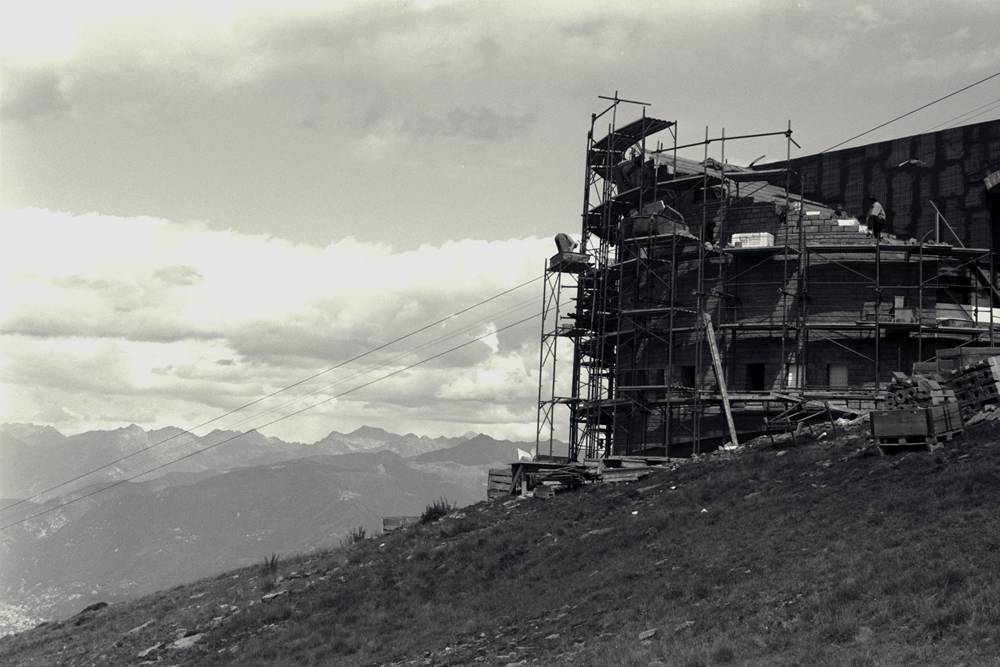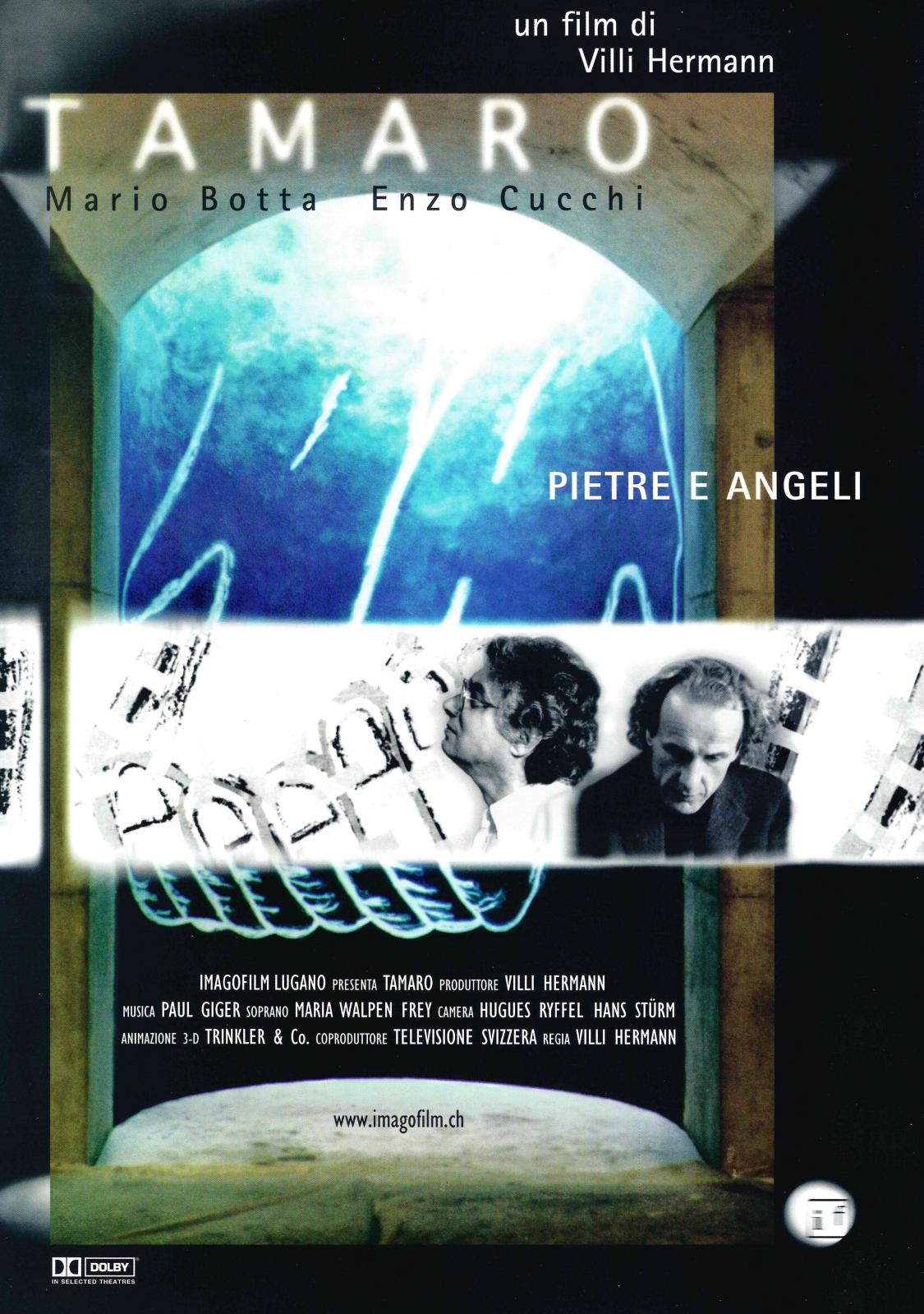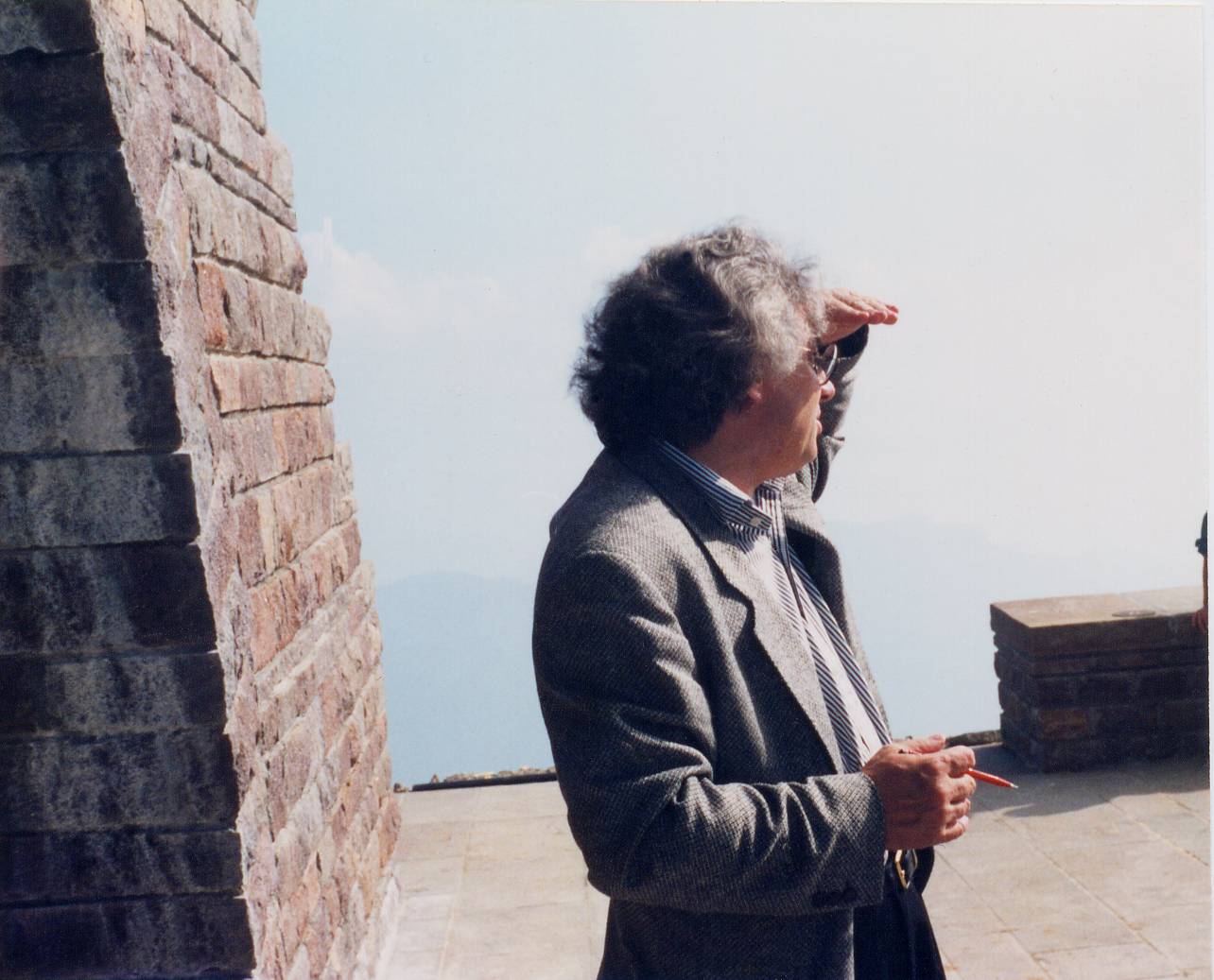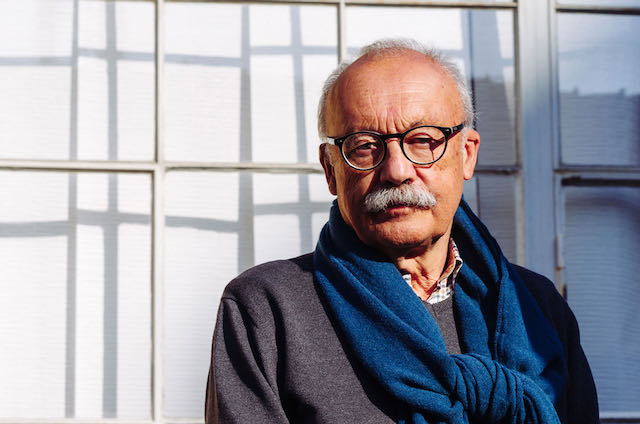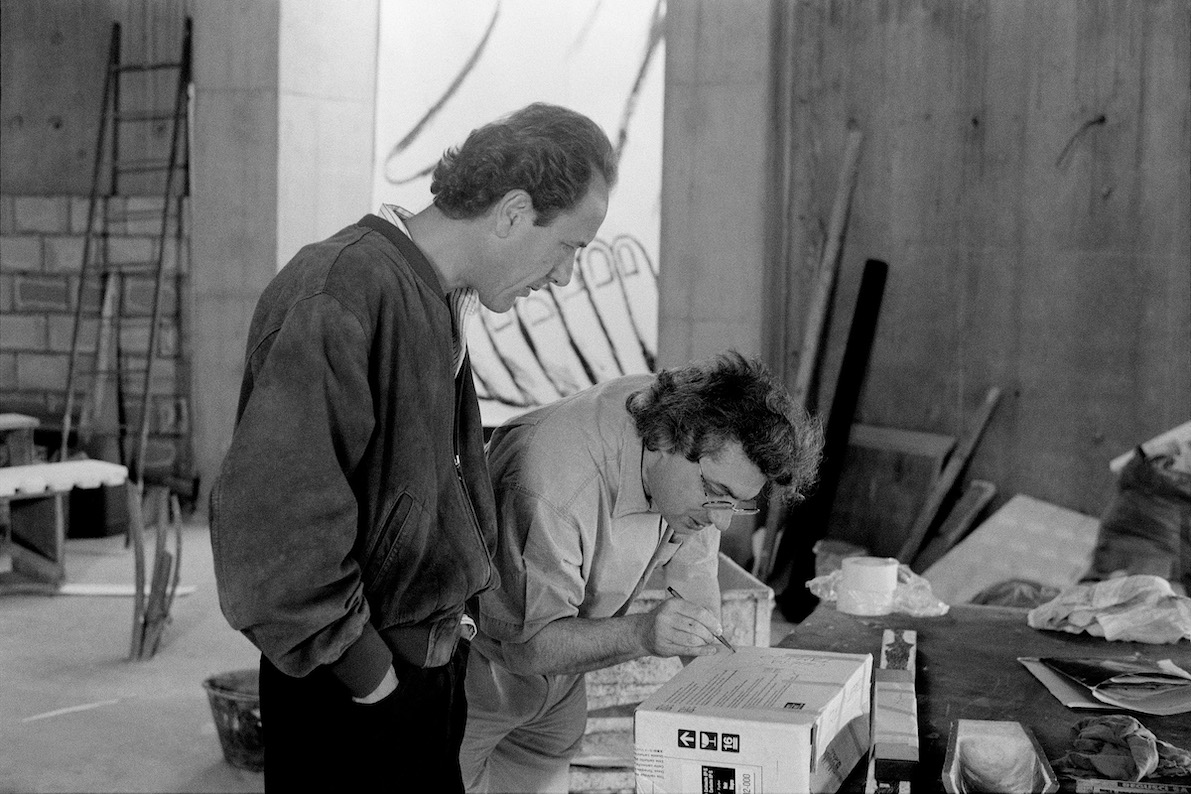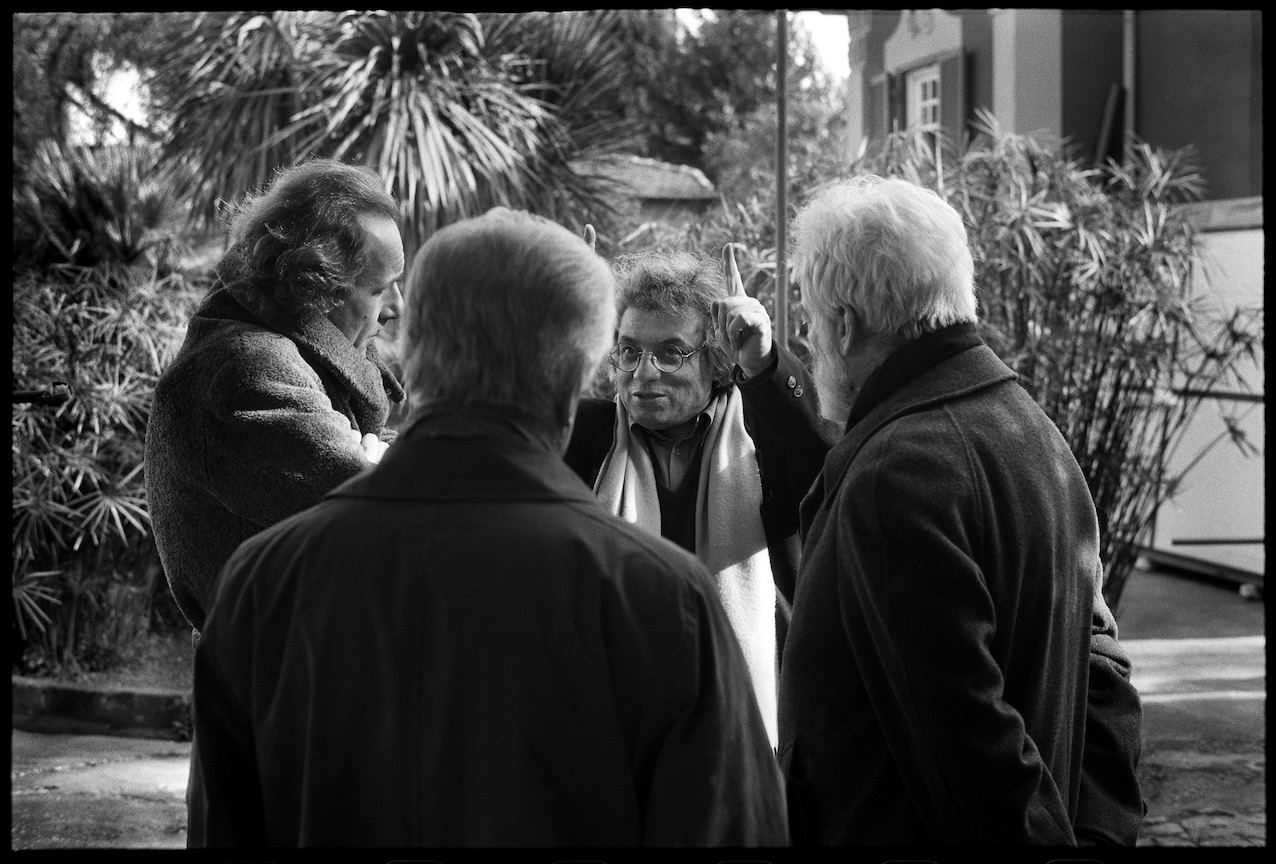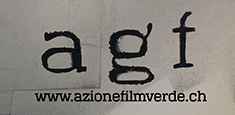The meeting of two creative forces in full freedom
Director Villi Hermann talks about "Tamaro. Stones and angels. Mario Botta Enzo Cucchi'.The digitally restored version of the documentary premiered at the 76th Locarno Film Festival
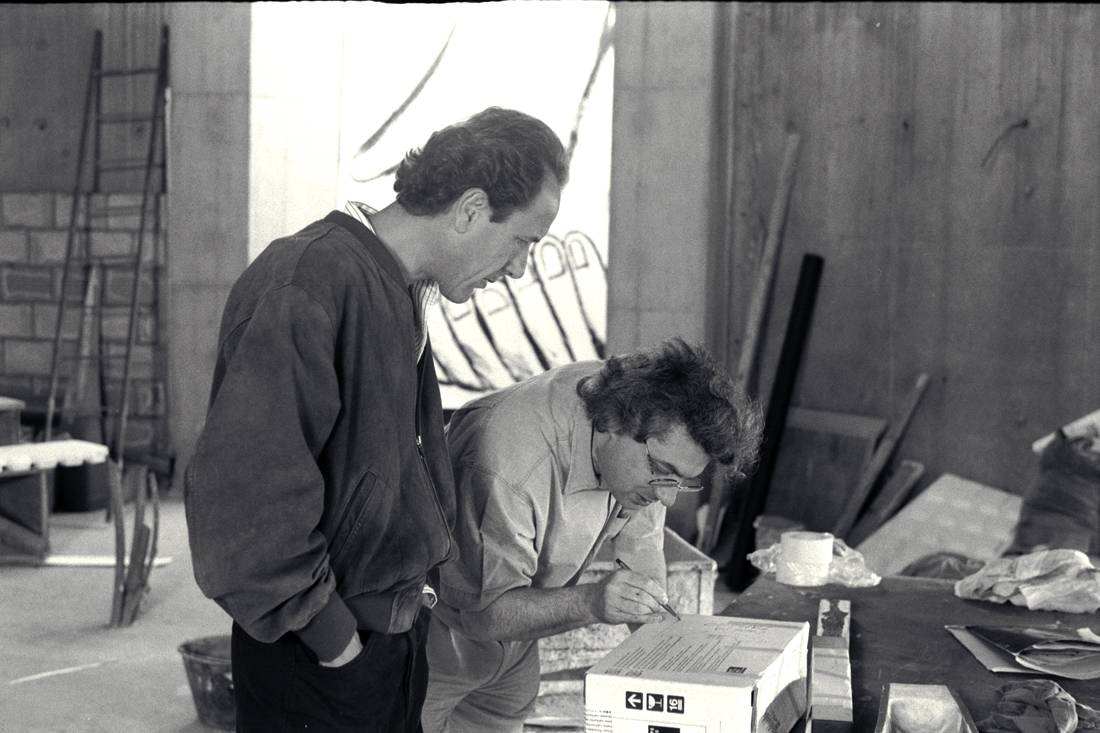
Standing at an altitude of about 1600 metres. A spiritual place, immersed in a natural landscape dotted with visible human interventions. It is the church of Santa Maria degli Angeli on Alpe Foppa. Commissioned by Egidio Cattaneo, it was designed by the world-famous architect Mario Botta from Ticino, who created one of his most impressive works on Monte Tamaro. Further embellishing it are paintings by the Italian artist Enzo Cucchi, one of the leading exponents of the trans-avant-garde movement.
The characteristics of the place, the work and the personalities involved in its realisation could not fail to intrigue a filmmaker like Villi Hermann, who dedicated a film to this undertaking, Tamaro. Stones and angels. Mario Botta Enzo Cucchi, released in 1998 by his production company Imagofilm, in co-production with RSI. The documentary is now back in a digitally restored 2K version that will have its premiere on Monday 7 August 2023, at 17:30 at Cinema Rialto 1 in Muralto, as part of the "Histoire(s) du cinema: Heritage online" section of the 76th Locarno Film Festival.
In addition to director Villi Hermann, the presentation will be attended by architect Mario Botta, Felix Rauh of the Memoriav Foundation and Patrick Lindenmeier of Andromeda Film, which carried out the restoration. To coincide with the presentation of the new version, the Epper Foundation in Ascona is showing an exhibition of photographs taken during the filming. The occasion therefore offers an unmissable opportunity to take a peek behind the scenes of the film's production together with its director Villi Hermann, Lucerne-born but Ticino-at-heart by adoption, who, with films such as Bankomatt, Matlosa and numerous documentaries to his credit, is not only a leading name in Swiss cinematography but also a doyen of audio-visual works in our canton.
"I knew Mario Botta, although not very well, as one knows each other in the village let's say. I had a small atelier near him at the time. One day we met and he told me about this new project. I suggested that we could follow it up,' Hermann says. 'Between us we had a kind of agreement. If something happened or was about to happen he would call me and I would pick up and go up. The problem was that the notice was always short and to make a film you need technicians that I didn't have time to call. So the team was reduced to the bone. Two friends of mine helped me with the camera and I was also the sound engineer. It was a complicated but wonderful process: everything was done 100 per cent on the spot. What attracted me was the fact that it was a kind of challenge. Normally when you make a film everything is planned in detail from the beginning, there are dossiers to be filed with the various institutions. Here, however, I started because I liked the idea".
Beyond the challenge of creation, what fascinated Villi Hermann, as he tells us, were the very different personalities of Mario Botta and Enzo Cucchi. "The former more taciturn, at work with his pen and sketches. The second was exuberant, talkative, full of ideas that he discarded and replaced in a continuous stream. They stimulated each other and the creation was wonderful,' the director recalls.
Along with them, another figure was central in shaping the church of Santa Maria degli Angeli, that of the distinguished scholar Father Giovanni Pozzi. His are the Marian texts that guided Cucchi in his artistic creation, culminating in the panels that embellish the chapel. "Without Father Pozzi," says Villi Hermann, "Cucchi in my opinion would have been lost. All the initial inspirations came from the long conversations between the two of them'.
Between these powerful creative forces at work, one had to know how to position oneself in the right way. 'Just like a good Swiss man,' smiles Villi Hermann, 'I just observed. I never intervened. I didn't even dare ask Mario Botta or Enzo Cucchi to move during filming or to move differently even if only for reasons of scene lighting. We were, if I may say so, at the service of the two of them, both with camera and sound. I had too much respect in front of these very self-confident characters but also willing to immediately change an idea, or a sketch, a fresco as well as the interior of the chapel itself, if necessary".
'During the work,' Hermann recalls, 'there was total freedom, on the part of Cucchi and on the part of Botta. The client never imposed to do this or that and I think it was quite a unique situation. I too had the same freedom. No one ever asked me to insert or remove anything from the film. Even for the choice of music I had freedom. I wanted the music to reflect the natural world and the total silence there, where sometimes it feels as if we are isolated from the world. I wanted something meditative, perhaps close to a somewhat archaic religiosity, and I found all this in the Zurich musician Paul Giger'. On the musical front, too, Father Pozzi's contribution was important: he is the author of some short Marian thoughts later set to music by Giger.
The church of Santa Maria degli Angeli on Monte Tamaro was consecrated in 1996 after four years of work. The making of the film took six, including post-production. A long journey into the forms of creativity that also left a profound experience in those who documented it. "I met two men I did not know well before. They gave me so much. They are people who have always continued to express themselves according to their own ideas, not letting themselves be influenced by fashions, trends or commercial dictates. I too, in my own small way,' Villi Hermann concludes, 'have tried to do the same thing. I have always made the films that I want to make, that have something in common with myself, be it social films or films dedicated to artists'.
THE RESTORATION AND PHOTO EXHIBITION
Originally shot on 16mm film, 'Tamaro. Stones and Angels. Mario Botta Enzo Cucchi", comes back to life again after its digital restoration, thus making a work documenting an important moment of architectural and artistic creation in our territory available to a wide audience, 25 years after its realisation.
The operation was supported by Memoriav in Berne, which is responsible for the protection of audiovisual heritage, on the one hand, and by the Department of Education, Culture and Sport (Republic and Canton of Ticino), Ticino Film Commission, Succès Passage Antenne, Egidio and Mariangela Cattaneo Foundation, and the Fondazione Dr. Hans Dietler/Kottmann, on the other. "The restoration was carried out by Andromeda Film in Zurich. The film is now in the standard format of today's digital projection DCP 2K,' explains Villi Hermann. 'However, we have respected the original vintage look, the typical 16mm look of the time, which in some ways reflects the spontaneity with which the film was made. The sound has also been restored because it was originally optical sound and all the electronic subtitles have been redone. I would like to thank the Locarno Film Festival for the wonderful presentation opportunity it offered us'.
And to fully immerse oneself in the fascinating journey that led to the making of the film, the Epper Foundation in Ascona is hosting from 29 July to 29 October an exhibition of scene photographs taken by Villi Hermann during filming. They are further evidence of the work of Botta, Cucchi as well as the workers involved in the construction. 'Among these photos,' smiles Villi Hermann, 'there is one that I particularly care about. It is not exactly beautiful, but you can see Monte Tamaro and the church all cloaked in white because there was still snow: in that respect I think it is a historic photo!"
F.C.


